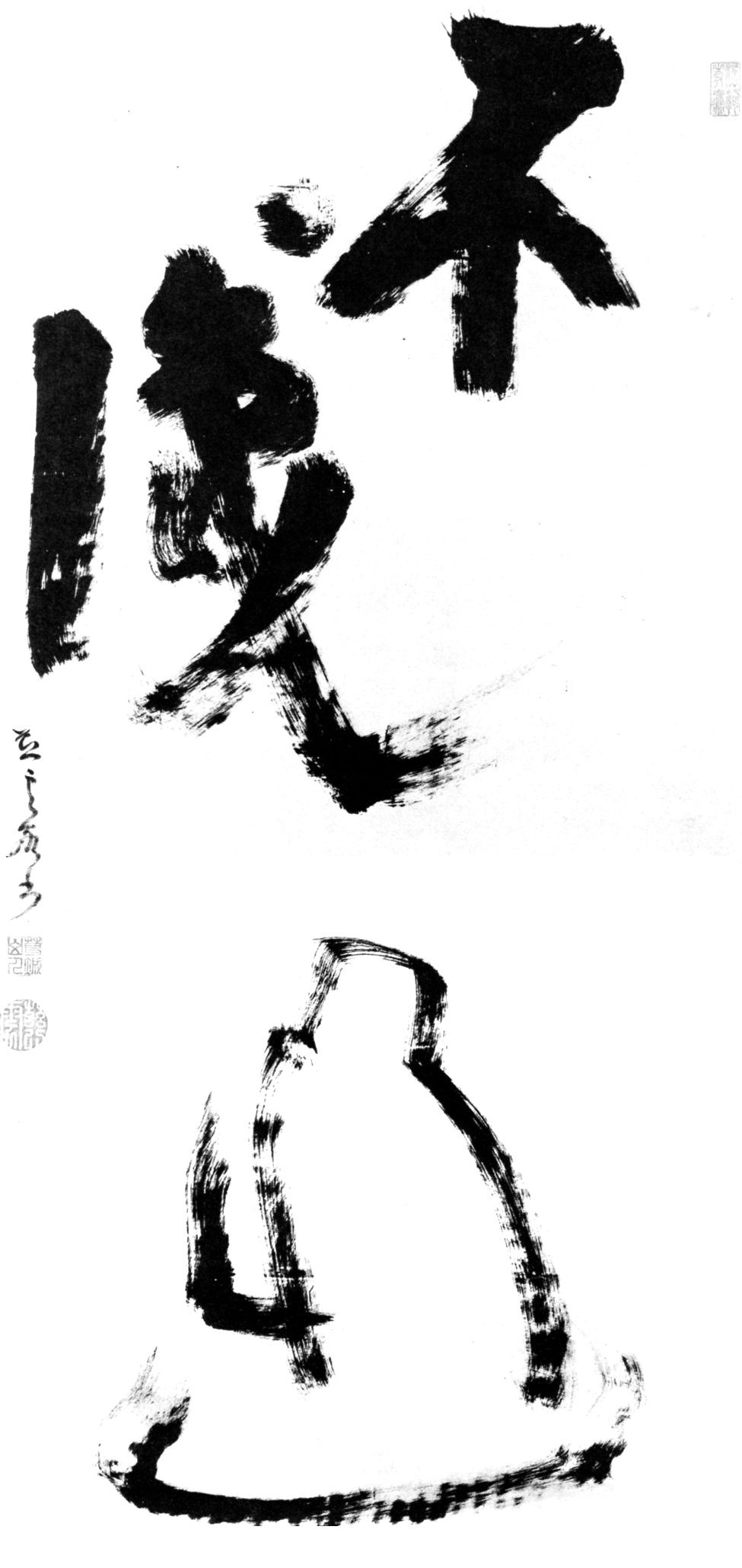The monk Tao-hsin was walking in the forest with the sage Fa-yung, who lived alone in the temple on Mount Niu-t’ou, and was so holy that the birds used to bring him offerings of flowers. As the two men were walking, the roar of a wild animal sounded nearby, making Tao-hsin jump frightfully. Fa-yung said, “I see it is still with you!” (attachment to the Earthly illusion). Later on, the two were sitting on two stones next to the temple when Fa-yung went inside to fetch the tea. While he was gone, Tao-hsin wrote the Chinese character for Buddha on the rock where Fa-yung had been sitting. When Fa-yung returned to sit down again, he saw the sacred Name written there and hesitated to sit. “I see,” said Tao-hsin, “it is still with you!” And thus Fa-yung became fully awakened…and the birds brought flowers no more.
__________________
The thing I first noticed about John Porcellino’s short comic, “Christmas Eve” is the breathing.
Because of the simplicity of his style — unvaried line weights, the lack of shading — the bulbous breath hanging in the air is as solid as everything else around it. It could be a distended snow flake, or some sort of alien critter curiously contemplating the (no more or less weighty) human nose. In that third panel, it even has an oddly solid sound effect appended to it — the “klump” is probably supposed to be a car door closing, but it could just as easily be the sound of the tadpole-like-breath bumping up against the panel border. Snow, air, beard-stubble, panel gutter — flesh or vapor, diegetic or un, everything exists in the same flat, empty whiteness, teetering on that thin line between something and nothing.
“Christmas Eve” wanders or drifts back and forth across that line repeatedly. The shapeless blob of breath seems, in that bottom left panel, to actually become the human figure, or the human figure becomes it. Breath out, and breath is gone; breath in and breath is you, breath out and the breath is gone. The self is lost, and found, and lost…or possibly found and lost and found. Drawing is breathing is creation, as long as what’s created is almost indistinguishable from nothing being created, or from nothing being erased.

Domingos Isabelinho highlighted this drawing in an earlier post, and it’s still my favorite in the comic; I love the way the lampost just ends, as if Porcellino got tired of drawing it…and the way the snow looks like its embodied light, falling in grainy dots only a little smaller than the footprints below. I think the wavery lines in the middle are supposed to be drifts of snow…but they also read as the lamplight, so what you see and how you see it, perception and perceived, merge into one.
On the penultimate page of the six page story, Porcellino writes the first words of the story: “I don’t want to be alive anymore”. At first I took this as a melodramatic suicide wish, which was irritating…and also seemed to clash with the comics gentle, almost devotional quiet. Thinking about it, though, it seems like it’s less a wish for death than a statement about his relationship to life. Wanting floats off like breath — or maybe the self is the breath that leaves wanting behind. In either case, what goes is desire and what’s left is the self as a kind of gift, that returns after being let go.
Porcellino seems, with probable intent, to be teetering on the verge of Zen. His wavery outline figures even recall Zen calligraphy, like this drawing by Buddhist priest Jiun Onko.
I’m not sure the comparison necessarily redounds to Porcellino’s credit, unfortunately. Onko’s brush strokes provide a dramatic, intense sense of creation as process which Porcellino’s figures can’t approach, for one thing. And, perhaps more importantly, the single image, summoning something out of nothing, with that one calligraphic statement (which means “Not Know”) seems to resonate much more powerfully, and simultaneously more subtly, than Porcellino’s short but still somehow too long narrative. Really, everything Porcellino had to say is on that first page, or in that image with the lamp. When he gets to the end, and we’re seeing man-looking-at-clouds we start to verge on treacly transcendence and Hollywood clichés. The moment’s too big and too small at the same time, the impetus for narrative closure and meaning overwhelming the earlier pages’ careful not-knowing.
On the other hand, though…there is something very Zen about art that fails in being Zen. Onko’s drawing is almost too good. I think it’s arguably one of the greatest comics ever, actually, but the very greatness perhaps makes it less Zen-like — it’s so holy that the birds flock around it.
Porcellino, on the other hand, flirts with greatness, but ends instead with comfortable banality. It is just a typical story about taking a walk on Christmas Eve, after all. The breath is just breath, the light is just light. There’s nothing special, and the blank space at the bottom of the last page is just there because Porcellino didn’t have enough story to fill it.

______________
The Snow Man
Wallace StevensOne must have a mind of winter
To regard the frost and the boughs
Of the pine-trees crusted with snow;And have been cold a long time
To behold the junipers shagged with ice,
The spruces rough in the distant glitterOf the January sun; and not to think
Of any misery in the sound of the wind,
In the sound of a few leaves,Which is the sound of the land
Full of the same wind
That is blowing in the same bare placeFor the listener, who listens in the snow,
And, nothing himself, beholds
Nothing that is not there and the nothing that is.



